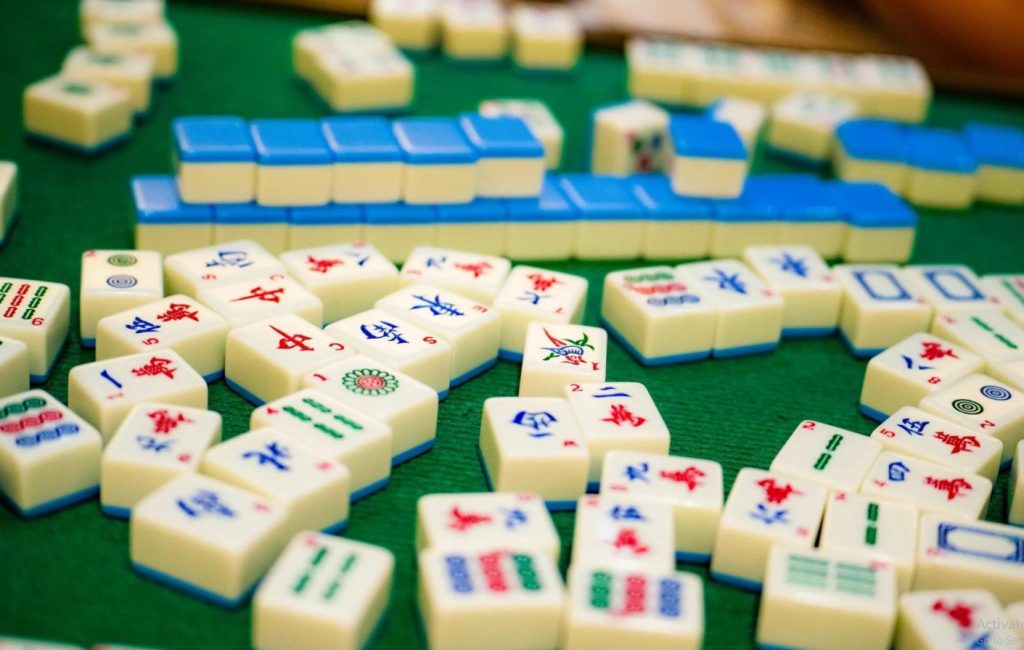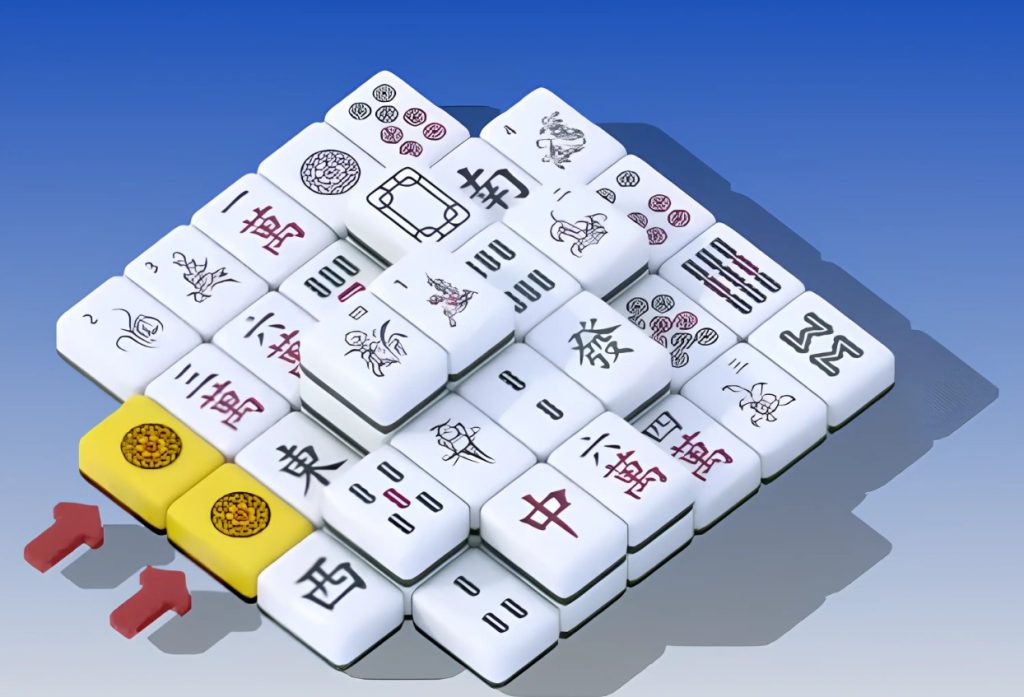Mahjong is an exciting game played with tiles that originated in China and requires skill, strategy, and some luck to get the greatest results. This ancient game, played with 144 beautiful tiles, requires the players through observation and quick decisions to make the winning combinations. Over the centuries it has changed from a regional pastime to an international means of expression and socialization. As a result, it has attracted its full share of adherents, who desire to have a mastery of its intricacies.
Whether you are a seasoned player or a curious beginner, you can now enjoy the thrill of this timeless game online — try Mahjong za darmo and experience the fun for yourself.

Origins of Mahjong in Ancient China
It is said to be a tile game which was played by the city’s elite. The game was probably derived from tile games based on cards or dominoes, as all the suits and honors were suggested by the symbols of the game that are verified by the Chinese. The handling of the tiles was going on in such a manner as to resemble the “clink clank” of the sparrow, so called, while it was handled, and hence the name given it which means in the dialect of China “sparrow.” The game naturally made its way to popularity as a social, strategic game of entertainment in the southern provinces.
By the end of the nineteenth century, regional games were discovered here and there in different provinces, modified by dialects of the various provinces and the customs of the people. The first regular use of the game is accredited to Chen Yu-Men, who was an official in the Imperial court, about the year 1846, although legends have attached to the game which say Confucius invented it because it was so great an aid to discipline.
There were various tiles used in this game, representing various mythical birds, all of which were supposed to symbolize intellect and luck and would naturally thrust its own way into the nation’s public life as some various forms of entertainment. During the early part of the 20th century it became popular rather widely on account of the social reforms that had been introduced, though at the same time it was being discussed variously on account of the gambling elements that could be found in it.
The Cultural Revolution branded it old culture and destroyed many of the sets, but it returned with greater vitality after Mao’s time. The families resulted in preserving the tradition by playing it surreptitiously, thus ensuring its continuance. Thus, it becomes indicative of the abiding quality of the Chinese national culture.
The Elements and the Rules of the Game
Mahjong is played with 144 tiles consisting of three suits, namely the Bamboos or Cans, the Circles or Tongs, the Characters or Jeungs together with honor tiles in the way of Winds and Dragons, and flowers and seasons as bonus tiles. There are four players sitting around a square table, before them building up a wall of tiles, after which they deal 13 each. The dealer has 14. The object of the game is to secure by drawing and discarding, making pairs and to retain one pair and then declare “Mahjong.”
Thus the whole arrangement of the game involves continuous effort at adapting one’s method of play according to the play of opponents.

The meld consists of Pungs, which are three of a kind, Kongs which are four of a kind, and Chows which are three in run of the same suit : honors are able only to be set up in a number of ways. The players say “Now” when they wish to sooth the players and thus build up their hands. In melding then one must be prepared to give one’s modus operandi, which thus of necessity escapes one. The scoring on sets will run all the way from simple pairs to complete sets on a full hand, which may be in pairs or other ways, etc., in points.
Wins on concealed hands at times may be doubled also. Thus a number of sets are bestowed toward perfection, and accented points go to those with as well as keen insight.
When the player gets bonus tiles, he receives points on them at once, which tiles do not enter in hand on which he plays. Dice are thrown to discover as a sort of chance, the Wind in which the dealer is. This determines the bonuses or points gained therein much to the good play with ostensible meaning. This is enjoyed through rounds until play enters over into a prescribed number of hands or points, which must be accomplished until one hundred and seventy products are out at that time. Thus all these factors prove lucky results of play and skillful knowledge.
The Method of the Spread of Mahjong as a World Game
The American Joseph P. Babcock presented Mahjong to the West in the 1920s, copyrighted the rules and English names of the tiles to accommodate Western taste. The imported sets quickly sold in New York, and the national craze dubbed the “game of a hundred intelligences” started. The women took to it as a modern amusement, a type with the changed characteristics of womanhood, and its exotic possibilities afforded a delightful room for romance. And thus it was that “high society” and the middle classes became imbued with the game.
From then on, the game turned up in Europe and Australia after the War and took localized forms, such as the British and Continental games. In Japan, Riichi Mahjong found a place in the limelight by adopting casual methods of play which fitted it for the competitive game and was promoted by anime and tournaments. The game has been worked out in Singapore and other places with a blending of the Chinese original and modern American method, including electronic games. It has grown in its international ramifications through adaptability.
After the War, the National Mah Jongg League of America was formed in 1937, whereby standard American rules were formulated for Mahjong, and the game of fads that has ever since gained a footing in American and foreign coffers has become standardized. There were revivals of the game in the United States after 1935, pervaded by the cycles of fads that came in connection with the 1950’s boom in the economic condition of the Orient. Today, this game of antiquity has gone to the web and applications, permitting a wider scope of opportunity for players. The millenniums are being brought in by the tournaments daily found on the web!, its possibilities of connecting humanity across continents as a game for all.
Key Variants and Their Individual Tricks
Chinese Classical Mahjong plays with 136 tiles, with skill more in evidence than jokers, contributing to the perfection of tile-play. American Mahjong has what they call 152 tiles and eight jokers and another different rotational “charlie” card so that its rules are different each year, but winning is based on larger tiles. The players’ objective is to secure certain hands indicated on the score cards which makes it easier for beginners to play. This game is very satisfactory for use in the social clubs in the U. S. A.
The Japanese variety of Riichi Mahjong adds points for concealed sets or melds and yaku or score, thus the element of bluffing is much increased. According to a player’s declaration points are given in tournaments, making this a much more exciting game. The old Hong Kong style is more involved with the scores being better for high stakes play. In this each variety fits better into certain styles of play whether social or serious.
The Vietnamese and Korean forms are easier yet as they either do away with suits or have local honor tiles which embody local significance. The digital versions such as on the mobile gaming software, have single player feasible forms or opponent play by means of artificial intelligence. All of these modifications retain the basic yet make for greater versatility as a draw for new audiences. Thus, the various forms augment the popular appeal of Mahjong.
Reasons For The Continued Popularity Of Mahjong
The combination of luck and strategy in Mahjong approaches such games as poker and bridge but the tile aspect of the shuffling makes it more of a tactile delight. The socializing factor gives the thrill of a game, since, with players in four handed play, the players are able to indulge in conversation and rivalry. The game is played in the family and handed down through the generations which gives families the opportunity to have togetherness by way of bonding at family gatherings. As stated previously, there is a feeling of community about the game which has become more felt in this electronic age.
Also the varying cultural aspects, viz. The scenario in “Crazy Rich Asians” gives a dramatic setting and reveals the significance of the score of Mahjong.
The media give the game visibility as it features it in a special report on the superstitions involved with the luck of the game, as played by enthusiastic players. International events such as the International Mahjong Day on August 1st. unites all those who unite in furthering the game. Hence, it continues to be given more visibility through entertainment.
The important factor in the game is the accessibility to the game through the availability of inexpensive sets of games which are efficiently simple to set up for all ages and accomplishments.
